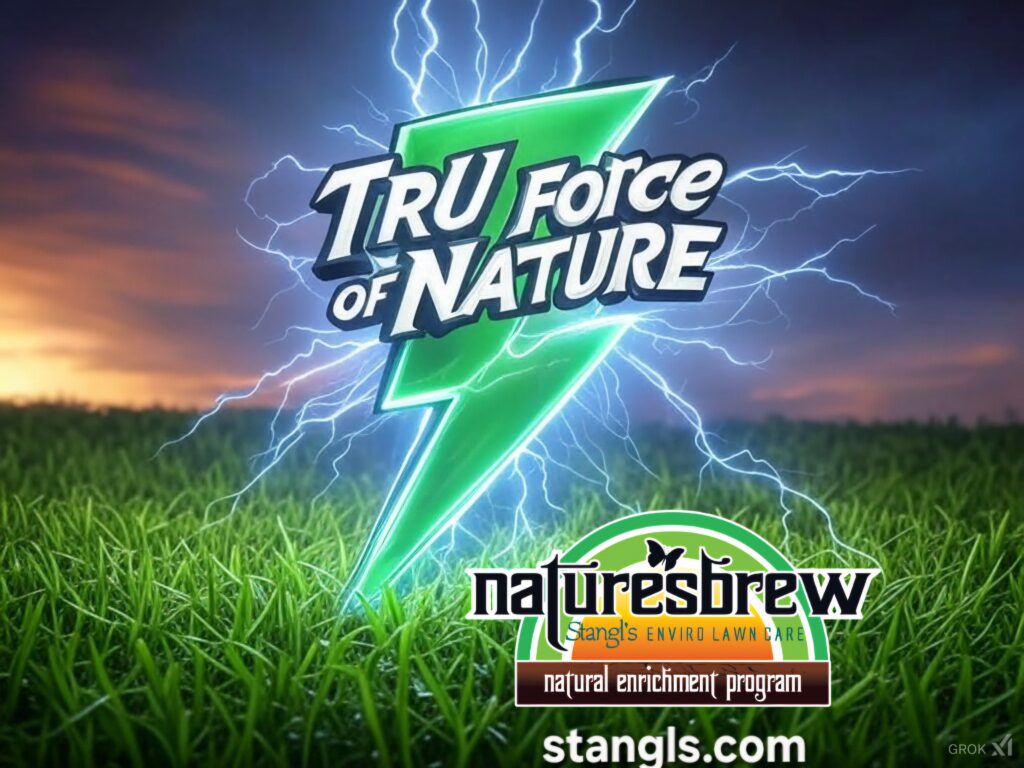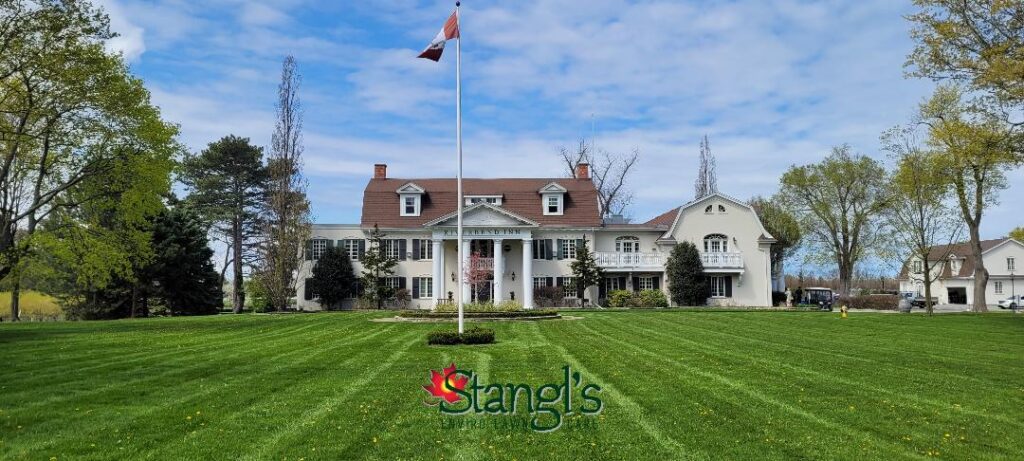Spring sales are here, and big box stores and the lawn care industry are pushing their “nasty” fertilizer and spray programs with promises of a perfect lawn. It’s the same old hype: quick fixes that seem too good to be true—because they are. These salt products kill soil life, compact it into dirt, and harm pets, kids, wildlife, and Niagara’s waterways with runoff. If you’re looking for an alternative, you’re not alone. I’ve been where you are, and after 44 years in lawn care, I’ve learned that true lawn health comes from reviving the soil, not poisoning it. At Stangl’s Enviro Lawn Care, we offer a regenerative approach that ditches the big box hype for a biology-first solution. But I’ll warn you: the transition isn’t always easy. Here’s my story—and what you need to know to make the switch.
My Conventional Start: Full In, Ready to Make Millions
I started in lawn care in 1981 at age 16, diving headfirst into conventional methods. I was ready to make millions, applying fertilizers and sprays to “make the world green.” I didn’t need formal education in soil science or agronomy—the industry made it seem so simple. There was no internet back then for instant answers, but the off-the-shelf programs promised everything I needed. I bought into the hype, thinking I was on the path to success. But year after year, I saw the same problems: pests, diseases, weeds, and compacted soil. The quick fixes weren’t working—they were toxic to me, the soil, and the environment. Algae blooms, and runoff became all too common, a direct result of these salt inputs. I realized I wasn’t truly green, and if those programs really worked, I’d still be using them.
The Transition to Regenerative: A Citizen Scientist’s Journey

I became a citizen scientist, teaching myself through books, conversations, and relentless observation—calling experts, talking to peers, and researching without the internet’s help. By 2014/15, I’d had enough. I transitioned to regenerative lawn care, focusing on reviving the life in the soil with Nature’s Brew and, soon, our plasma fertilizer (launching April 2025). Through the rhizophagy cycle, plants feed microbes with sugars, supporting fungi, bacteria, nematodes, and more to build living soil. Dandelions, demonized by the industry, became my allies, signaling soil health issues I could address naturally. The results were undeniable: one of my 30-year commercial clients hasn’t seen insect or disease issues in over a decade. We measure soil health with tools like Brix (10+ for disease resistance, 14+ for insect resistance, per Dr. Thomas Dykstra—learn more at Dykstra Laboratories), EC (the soil’s “heartbeat”), and PSI (its “lungs”), ensuring a thriving ecosystem.
But the transition wasn’t easy. I often felt like I lacked the knowledge to make a real difference. Without a formal education, I worried I wasn’t enough. The conventional lawn care industry undervalues regenerative approaches, prioritizing quick fixes over long-term soil health. Customers, driven by the “ego trophy lawn” mindset, treated my services as a commodity—expecting cheap, instant results and holding me “hostage” for payment when their unrealistic expectations weren’t met. They thought they knew what to do and what the outcomes should be, often fueled by social media’s “if it’s online, it must be true” echo chamber.
Overcoming Doubt: A Self-Taught Pioneer
Those feelings of lacking knowledge are common when transitioning from conventional to regenerative lawn care—or to Stangl’s approach. You might worry you don’t know enough, or fall back on old ways and expectations, especially when customers push for quick fixes. But as I recall, “If a worry about a lack of education comes up, talk it down. Acknowledge that some of the greatest contributing geniuses in your technology age did not have college degrees… They were self-taught. They had an idea and they gathered to them people who could contribute to that.” That’s my story. I was self-taught, driven by curiosity and a commitment to doing better each year. I gathered knowledge from experts like Dr. Dykstra and Glen Rabenberg of Soil Works LLC—explore their work at Soil Works LLC. For a deeper dive, check out their Soil Solutions Series on YouTube: Healthy Plants & Common Misconceptions to understand Brix and the rhizophagy cycle, Insect Resistance (Ep. 03) for how Brix impacts pest control, Soil Electrical Conductivity (Ep. 04) to learn about EC as the soil’s “heartbeat,” and Is Your Soil Ready for Microbes? to see why soil biology matters. I stopped doubting myself and became a pioneer in regenerative lawn care, and you can too.
Ditch the Big Box Hype and Lawn care Services for Real Soil Health
Big box stores and brands names sell the same snake oil they’ve peddled for over 70 years: fertilizers and sprays that promise perfection but deliver problems. It’s insanity—repeating the same approach while expecting different outcomes. At Stangl’s, we offer an alternative that works with nature, not against it. We revive your soil’s life, creating lawns that thrive naturally. Ready to ditch the big box hype? Join our Regenerative Lawn Care Facebook page (96 members and growing!) and grab our toolkit on March 24th, 2025—a 14-section guide to building living soil. See the proof at Stangl’s Before & After Transformations, or call (905) 641-8133 to start your journey. #AwakenSoil #Stangls #Niagara #RegenerativeLawn #EcoSafe
